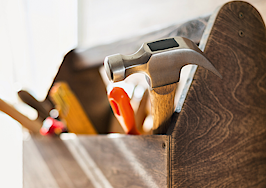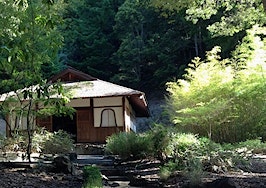Although Americans have slashed their spending on certain consumer goods due to the coronavirus outbreak, there’s one area they’re still spending plenty of dough: utilities. As much of the country inches closer to the one-month shelter-in-place mark, utility companies have noticed a sharp and expected increase in water, electricity and gas usage.
For example, Austin has experienced a 17 percent increase in residential electricity usage since Mayor Steve Adler issued a disaster declaration on March 6. As a result, Austin Energy has sent 33,000 high energy usage alerts and 45,800 high bill alerts to residents — an increase of 6,600 from this time last year.
“A lot of us are working from home and have kids at home and will be using more energy, period,” Austin Energy spokesperson Jennifer Herber told the Statesman. “The last thing you need is to have sticker shock when your bill comes at the end of the month.”
While states are giving certain residents a break on paying their bills, energy conservation technology company Sense said it’s still smart for homeowners to practice energy conservation, especially as we reach the spring and summer months when utility bills reach a seasonal high.
“While everyone is quarantined over the coming weeks in their homes, families may be wondering how to keep their energy costs down,” read Sense’s blog post. “Most advice about home energy savings involves big projects, like insulating your attic, replacing old windows or buying Energy STAR-rated appliances. But what can you do right now at home to save energy, just by making a few changes?”
Unplug your devices
According to Sense, consumer electronics are the number one energy vampires, accounting for 23 percent of the average monthly electricity bill. Instead of keeping your coffee machine, toaster or desktop in the socket all day, Sense suggests unplugging them when they’re not in use to save an upwards of $322 per year.
“Take a tour of your home and put your printers, PCs, laptops, home entertainment equipment and gaming systems on power strips — smart ones, if you have them — and turn them off when they are not in use,” they said. “Some things have to remain on, of course, like a cable box, but does your printer need to stay in idle mode all the time?”
Coffee makers are surprisingly the biggest culprit since they expend as much energy as a 60-watt lightbulb even in idle mode, costing you an extra $60 per year.
Swap your lightbulbs
Incandescent lightbulbs may save you money in the checkout line, but they use up to 70 percent more energy and burn out much quicker than LED options. Although LED bulbs can cost up to $60 for a pair, Consumer Reports said these bulbs are a better long-term buy since they provide 49,000 more hours of usage than an incandescent bulb.
Shut off the wine cooler
Although most people feel they need a drink (or two) at this stressful time, keeping extra wine coolers, refrigerators and freezers on may be costing you an extra $88 annually. Eighty-eight dollars may not be much to most homeowners, but if you’re looking for a way to save every dime possible in the face of unemployment or reduced work hours, retiring the wine cooler could be a smart way to shave energy costs.
“This may seem like the worst of times to consolidate your food into a single refrigerator, but if your extra fridge or freezer is an older model that’s been retired to a garage or basement, it’s far less energy efficient than newer models,” the post read. “Decide if that extra cooling is necessary. For the fridges that remain in operation, give them a spring cleaning by vacuuming the condenser coils, inspecting and cleaning the door gaskets for a proper seal, and checking that the temperature settings are correct: at or below 40 degrees for fridge and at 0 degrees for the freezer.”
Clean your dryer vent
Dryer vents are often one of the most forgotten about household items until they begin to fail, costing you more money and precious time in a simple attempt to dry your clothes. In addition to creating a headache in the laundry room, dusty dryer vents can cause your air conditioner to malfunction and actually pose a fire risk.
Handy homeowners can clean ducts on their own, but a professional in a previous Inman article suggests owners bring in a pro to do a quick evaluation first to make sure there’s no mildew or mold.












